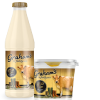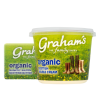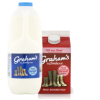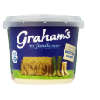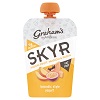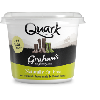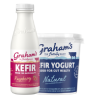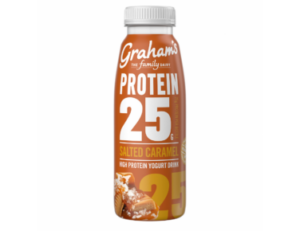
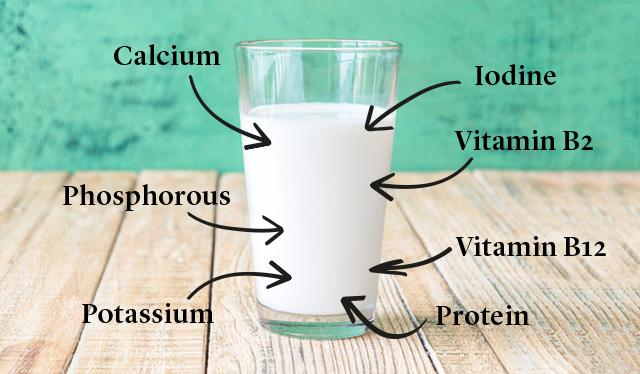
Health and nutrition are a big talking point for most people these days and there can be a lot of conflicting views and stats flying around. People sometimes ask ‘how many calories are there in a pint of milk’… but that’s a little like asking how long is a piece of string, while forgetting to ask what the string is actually useful for.
That’s why we thought we’d put together a blog explaining the different nutritional options that can be found depending on the type of milk you drink. We think it will help show that ‘how many calories are in a pint of milk’ may not be the right question to ask when working out which milk is the best one for you.
What’s the nutritional value of whole milk?
Whole milk means that the milk hasn’t been skimmed or semi-skimmed (this is when more of the fat content is removed from the milk to make it lower in fat). Because of that it has a higher fat content, with our own Graham’s Whole Milk having a minimum fat content of 3.5%. That higher fat content also means that it’s higher in calories, containing 65 calories per 100ml, roughly the same as in pure pomegranate juice.
What’s important to consider though is the nutritional value that comes along with the calories found in whole milk. This includes whole milk containing 3.4g of protein per 100ml, which is important for muscle repair and maintenance, as well helping to keep you feeling fuller for longer. That’s before even mentioning that milk contains Vitamins A, D and B12, as well as minerals such as potassium, calcium, phosphorous, zinc and magnesium.
What about the calories in Gold Top Milk – milk from Jersey cattle?
We’ve gone into greater detail about the specifics of milk from Jersey cattle in a previous blog but we’ll summarise the key takeaways from it here too. Milk from Jersey cows is higher in fat (it has a fat content of 5% compared to the 3.5% in standard whole milk), which means a higher calorific content too (81 calories per 100ml).
However, it’s also 18% higher in protein and 20% higher in calcium so it packs a powerful nutrient punch.
How about skimmed and semi-skimmed milk nutrition?
As we mentioned earlier, skimmed and semi-skimmed milks are ones that have had their fat content reduced, which in turn has the effect of lowering their overall calorific value. For instance, our Graham’s Semi-Skimmed Milk contains 47 calories per 100ml, while our Graham’s Skimmed Milk contains 35 calories per 100 ml. That means semi-skimmed milk contains less calories than either of the two leading colas, but also contains 3.5g of protein per 100ml.
What does this mean for you when choosing the right milk?
You need to find the right milk for your lifestyle and for your diet. There’s such a wide range of options that it’s easy to do that (we haven’t even mentioned our Organic range in this article). Whether your focus is on introducing more or less fat to your diet or upping your protein or calcium intake, there’s a milk for you.
How many calories are in a pint of milk? That depends on your choice. But always remember to take into account what else is in that pint of milk, in terms of protein, calcium, vitamins and minerals.

